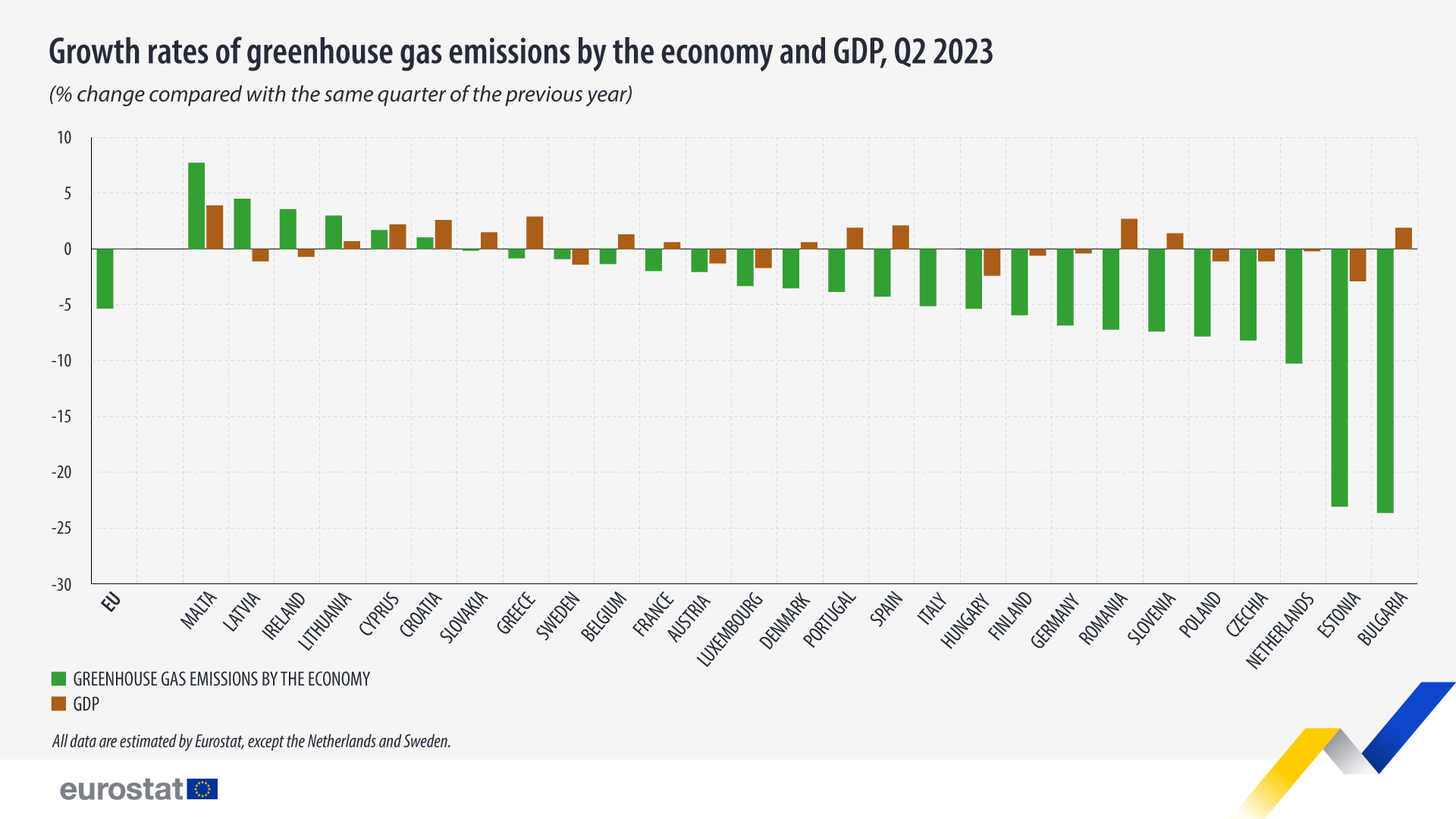In the same period, the EU’s gross domestic product (GDP) remained stable, registering just a very small variation (+0.05% in the second quarter of 2023, compared with the same quarter of 2022).
This information comes from data on quarterly estimates for greenhouse gas emissions by economic activity published by Eurostat today.
In the second quarter of 2023, the economic sectors responsible for most greenhouse gas emissions were ‘manufacturing’ (23.5%), ‘households’ (17.9%), ‘electricity, gas supply’ (15.5%), ‘agriculture’ (14.3%), followed by ‘transportation and storage’ (12.8%).
Compared with the second quarter of 2022, emissions decreased in 6 out of 9 economic sectors. The biggest decrease was registered in ‘electricity, gas supply’ (-22.0%). The main sector in which emissions increased was ‘transportation and storage’ (+1.7%).
Greenhouse gas emissions down in 21 EU countries
In the second quarter of 2023, greenhouse gas emissions decreased in 21 EU countries, when compared with the second quarter of 2022. Increases were registered in Malta (+7.7%), Latvia (+4.5%), Ireland (+3.6%), Lithuania (+3.0%), Cyprus (+1.7%) and Croatia (+1.0%). Among these six EU members, four had a GDP increase: Malta (+3.9%), Croatia (+2.6%), Cyprus (+2.2%) and Lithuania (+0.7%).
The largest reductions in greenhouse gases were registered in Bulgaria (-23.7%), Estonia (-23.1%) and the Netherlands (-10.3%).
Out of the 21 EU members who decreased their emissions, 10 recorded a decline in their GDP (Estonia, Hungary, Luxembourg, Sweden, Austria, Czechia, Poland, Finland, Germany, and the Netherlands). Italy maintained its GDP at the same level as the second quarter of 2022 and decreased its GHG emissions. Ten EU countries (Denmark, France, Belgium, Slovenia, Slovakia, Bulgaria, Portugal, Spain, Romania, and Greece) managed to decrease emissions while growing their GDP.











